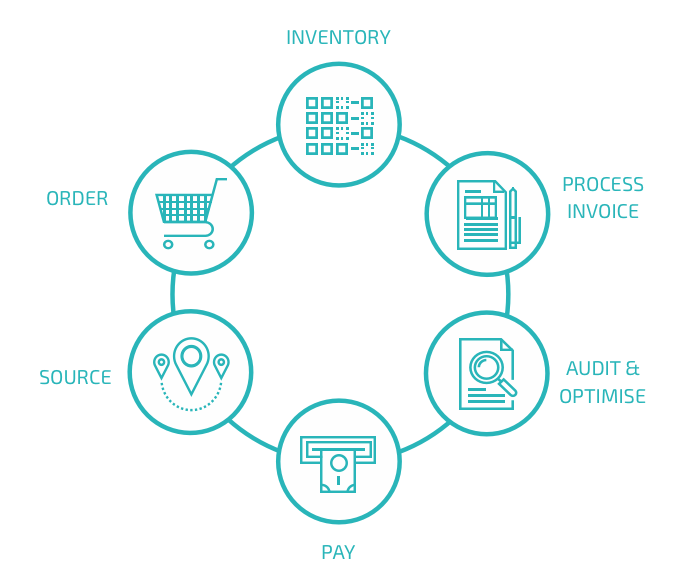Telecoms can be one of the highest expenses within an enterprise, but there are plenty of opportunities for cost reductions. Many businesses pay above-market prices, don’t discover billing errors, use outmoded technologies, and purchase too much capacity.
In some cases, these problems are compounded by an overly cautious attitude. Since those responsible can be punished heavily for service interruptions yet only rewarded modestly for cost management, the “if it ain’t broke, don’t fix it” mentality can prevail.
Yet in reality, good telecom expense management (TEM) companies will implement best practices quickly with minimal disruption. And once up and running, the telecom cost reductions speak for themselves. They help to reign in telecom spend significantly, reduce risk, and enhance internal processes.
But what key traits and best practices do they share – and what should you look for in a TEM provider to be sure of quality?
5 Telecom Expense Management Best Practices
1. Establish Financial Stability
The leading TEM companies will work in partnership with you for the long haul. Once early implementation projects are completed, the benefits of TEM become cumulative. Your provider will gain an increasingly sophisticated understanding of your environment and expenses.
Be aware that some TEM providers are owned by short-term investors, so their customers carry the risk of their vendor being sold during their contract. When this happens, the customer’s service is disrupted and they often have to bear the costs of repeating implementation projects – wasting a huge amount of time and effort.
2. Frequent and Best Practice Auditing
Telecom expense audits are a cornerstone of effective TEM and can unlock enormous savings. Best practice TEM is to perform audits on an ongoing rather than intermittent basis. This is because it's the best way to identify and deal with any systemic problems while pinpointing savings.
TEM vendors that take an intermittent approach are sometimes known as “box auditors” as they set up shop within a business for a period of time, take away a box of files, and complete a historical audit. As they’re only nested within a company for a limited time, they don’t secure a complete understanding of the telecom environment. They are therefore prone to error.
Errors also tend to be missed when a TEM vendor just audits based on changes at the summary bill level. Only auditing bills if the total amount has changed materially is much like gauging the size of an iceberg by just looking at what’s above water.
To ensure best practice TEM, auditing must go from the individual inventory level, all the way to the Universal Service Ordering Code (USOC), on every bill, every month. This lets your TEM provider know everything that’s happening below the surface and catch errors on every bill.
3. Integrate MACD Activity and Inventory with Expenses
MACD, sometimes known as provisioning activity, describes any order for a move, an add, a change or a disconnection of services. Many organizations manage this independently to telecom expenses, leading to inaccurate billing and unnoticed overcharges creeping in.
In large businesses, a telecoms inventory is constantly changing. So without a systematic approach, mistakes are easily made. Best practice telecom expense management will integrate MACD activities with inventory records and full-service TEM. This ensures everything is within a single source, and changes are captured and accounted for.
4. Provide a Service, Not Just Software
Best practice TEM services should provide a dedicated team that becomes part of your business. They should take ownership and responsibility for delivering real business outcomes – such as correctly ordered services, cost reductions, and improved contracts.
And each region of your business should be supported with in-region resources – due to both availability issues and familiarity with that region’s telecom environment, processes, and vendors.
By engaging with a full service TEM provider, you'll profit from the vendor’s industry expertise. For example, in contract-sourcing, procurement, provisioning and inventory management, invoice processing and payment servicing, and auditing.
When TEM providers deliver their managed services along with their software, you’re more likely to:
- Experience actual savings and an improved bottom line.
- Eradicate the trouble of service interruptions caused by missed payments.
- Make better decisions, since you have more timely and accurate inventory and expense data on which to base them.
- Free up time to focus on those business transformation projects you can never fit into your normal schedule.
5. Manage the Entire Telecoms Lifecycle
With an end-to-end service, the reduction of telecoms risk and spend starts to work as a truly well-oiled machine. For example, auditing works best when your TEM provider also takes care of your procurement of devices and services. This is because they can develop and maintain a telecom inventory, and auditing is executed against an exact picture of your assets.

When telecom inventory management is part of a whole life-cycle approach, you only need to look at a single source to understand your inventory and its related invoices.
Does Your Telecom Expense Management Provider Implement Best Practice?
In addition to your own research, it's wise to seek independent and objective advice.
The latest TEM market guide from Gartner reinforces many of the points we've discussed, while also offering additional tips. For example, when evaluating a telecom expense management provider, it recommends you request recent references of the same size, geographic spread,
Topics: TEM

